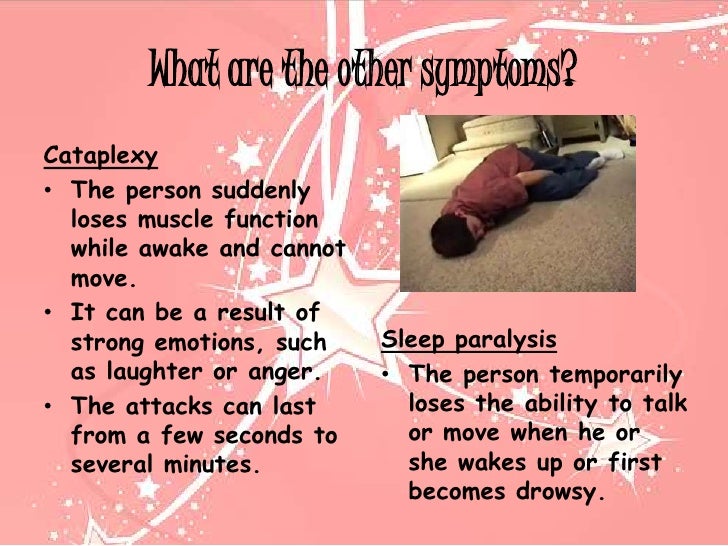

serotonin syndrome (a dangerous condition that’s caused. Typically, people with cataplexy have more severe forms of narcolepsy. Vision problems, such as double vision or blindness. With cataplexy, you have sudden muscle weakness or paralysis. Speech problems, such as the inability to speak or slurred speech. Understanding KLS may help understand the complex relationship of hypersomnia with mood disturbances. Signs and symptoms that affect the senses may include: Numbness or loss of the touch sensation.

NT1 was formerly known as narcolepsy with cataplexy. Our center is always interested in recruiting patients with KLS for various research protocols and collaborates closely with the KLS foundation to find a solution for these patients. NT1 is associated with the symptom of cataplexy, which is the sudden loss of muscle tone. Recent genetic studies indicate an overlap with circadian problems and bipolar disorder. Imaging studies suggest that parts of the brain such as the thalamus, hypothalamus and patchy areas in the cortex are inactivated during episodes, explaining symptoms. This review describes the diagnosis and management of cataplexy: attacks of bilateral loss of muscle tone, triggered by emotions and with preserved. All diagnostic test results on KLS patients to date, including brain imagery, EEG, serum virus titers, and CSF examination, have been normal, although recent research in our lab suggest a panel of protein measured in blood or CSF could help the diagnosis. In rare cases, it may be triggered by sexual intercourse ( Poryazova et al., 2009a ). It can be very disruptive to the life and study of these patients. Frequently, cataplexy is triggered by individuals experiencing powerful positive emotional stimuli, such as laughter or social interactions ( Schiappa et al., 2018 ). More variable features include optic atrophy, sensory neuropathy, psychosis, and depression (summary by Winkelmann et al., 2012). KLS primarily strikes adolescents and is self-limiting cessation of episodes typically occurs in early adult life. ADCADN is an autosomal dominant neurologic disorder characterized by adult onset of progressive cerebellar ataxia, narcolepsy/cataplexy, sensorineural deafness, and dementia. Prader-Willi syndrome: Prader-Willi syndrome is a genetic condition that can cause delayed growth, development delays, and feeding challenges.


 0 kommentar(er)
0 kommentar(er)
